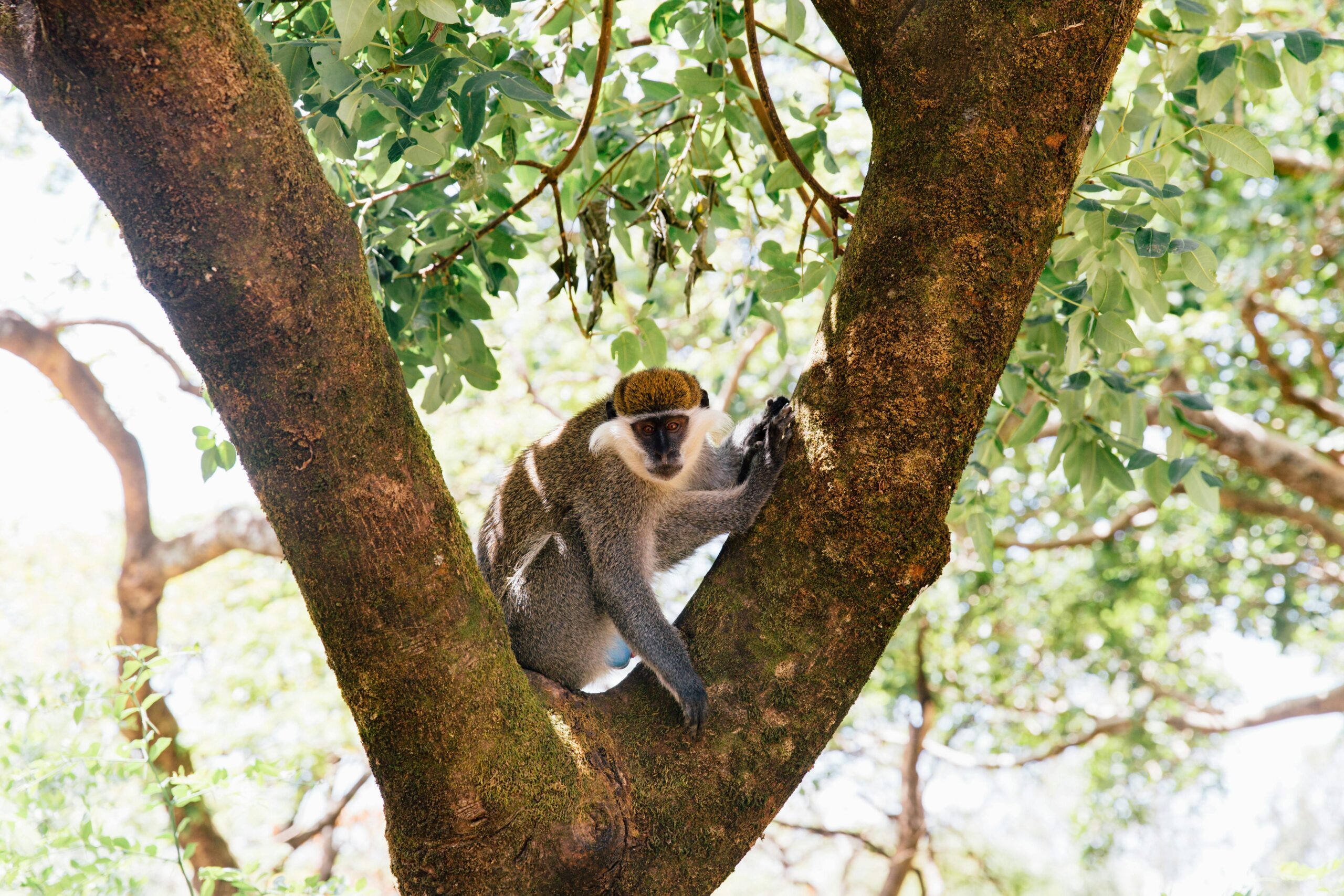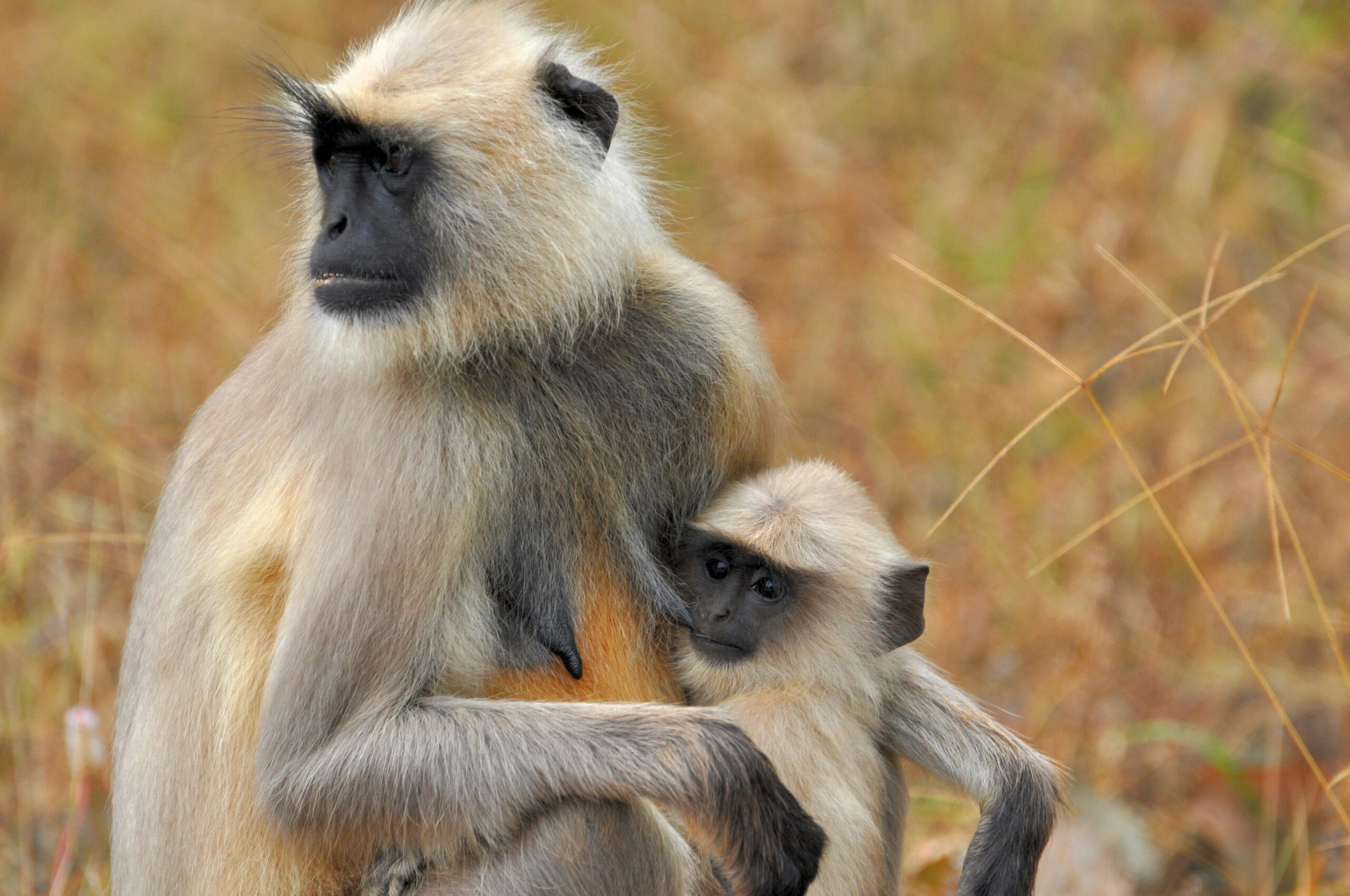Mount Kenya, with its towering peaks and lush ecosystems, is a haven for diverse wildlife, including several species of monkeys that bring life and movement to the forest canopies. These playful and intelligent creatures captivate visitors with their lively antics and fascinating behaviors. Whether swinging through the trees or curiously observing human visitors, the monkeys of Mount Kenya provide an enriching glimpse into the natural world.
The Monkeys of Mount Kenya: An Overview
Mount Kenya is home to two main species of monkeys: the Colobus Monkey and the Sykes’ Monkey. These primates thrive in the mountain’s montane forests, where the abundance of food and shelter creates an ideal environment for their survival.
Colobus Monkeys (Colobus guereza)
Known for their striking black-and-white fur, colobus monkeys are among the most distinctive animals on Mount Kenya. Their flowing white tails and long, silky coats give them an almost mythical appearance as they leap gracefully through the trees. Colobus monkeys are arboreal, rarely descending to the ground, and feed primarily on leaves, which they can digest efficiently thanks to their specialized stomachs.Sykes’ Monkeys (Cercopithecus albogularis)
Also called the white-throated monkey, Sykes’ monkeys are smaller than colobus monkeys and easily identifiable by their dark fur and white throat patches. These social and curious primates are often seen foraging for fruits, seeds, and insects. Unlike colobus monkeys, Sykes’ monkeys are more likely to descend to the forest floor, adding to their versatility as foragers.
Habitat: Where to Find Monkeys on Mount Kenya
The lower and middle slopes of Mount Kenya, covered in dense montane forests and bamboo groves, are the primary habitats for monkeys. These areas are rich in vegetation and offer plenty of canopy cover, making them perfect for these agile creatures.
- Mount Kenya Forest Reserve: This area provides an excellent opportunity to spot both colobus and Sykes’ monkeys in their natural environment.
- Riverine Forests: Monkeys are often found near rivers and streams, where the abundance of food attracts them.
- Bamboo Zones: Sykes’ monkeys, in particular, are known to explore the bamboo forests in search of food and shelter.
Behavior and Social Dynamics
Monkeys are highly social animals, living in groups called troops. Observing their interactions offers a fascinating window into their complex social structures and behaviors.
- Colobus Monkeys: These monkeys live in smaller, family-based groups led by a dominant male. They communicate through a combination of vocalizations, body language, and even facial expressions. Watching a group of colobus monkeys leaping effortlessly between trees is a mesmerizing sight.
- Sykes’ Monkeys: More extroverted than their colobus counterparts, Sykes’ monkeys often approach visitors with curiosity. They live in larger troops with intricate social hierarchies and spend much of their time foraging together.
Monkeys and Mount Kenya’s Ecosystem
Monkeys play a vital role in maintaining the balance of Mount Kenya’s ecosystems:
- Seed Dispersal: As they consume fruits, monkeys inadvertently help spread seeds throughout the forest, aiding in the regeneration of vegetation.
- Pollination: While foraging for nectar, monkeys contribute to the pollination of various plant species, ensuring the health of the forest.
- Prey for Predators: Monkeys are an essential part of the food chain, serving as prey for predators like eagles and leopards, which helps maintain ecological balance.
Challenges and Conservation
Despite their adaptability, monkeys on Mount Kenya face several threats, including habitat loss due to deforestation and human-wildlife conflict. Conservation efforts are critical to protecting these primates and their habitats:
- Forest Preservation: Initiatives to conserve and restore Mount Kenya’s forests ensure that monkeys have a safe environment to thrive.
- Community Engagement: Educating local communities about the ecological importance of monkeys helps reduce conflict and fosters coexistence.
- Research and Monitoring: Ongoing studies on monkey populations and behavior provide valuable data for conservation planning.
Watching Monkeys on Mount Kenya
Visitors to Mount Kenya have the opportunity to observe monkeys in their natural habitat, a rewarding experience for wildlife enthusiasts and nature lovers alike.
- Guided Walks: Local guides can take you to monkey hotspots, ensuring a safe and informative encounter.
- Early Mornings and Late Afternoons: Monkeys are most active during these times, increasing your chances of spotting them.
- Eco-Friendly Lodges: Many lodges near Mount Kenya are situated in or around monkey habitats, providing guests with close-up views of these primates.
Why Monkeys on Mount Kenya Are Unique
What makes the monkeys of Mount Kenya special is their adaptability and the role they play in the mountain’s rich biodiversity. Whether it’s the elegant leaps of the colobus monkeys or the inquisitive nature of the Sykes’ monkeys, each encounter is a reminder of the interconnectedness of life in this unique ecosystem.
A Call to Experience Their World
Watching monkeys in the wild is a joyful and humbling experience. Their playful behaviors, social interactions, and adaptability inspire awe and a deeper appreciation for the natural world.
As you explore Mount Kenya, take time to observe its vibrant primate life. Every rustle of leaves and playful chatter of monkeys is a testament to the thriving biodiversity that makes this mountain a true natural wonder.




